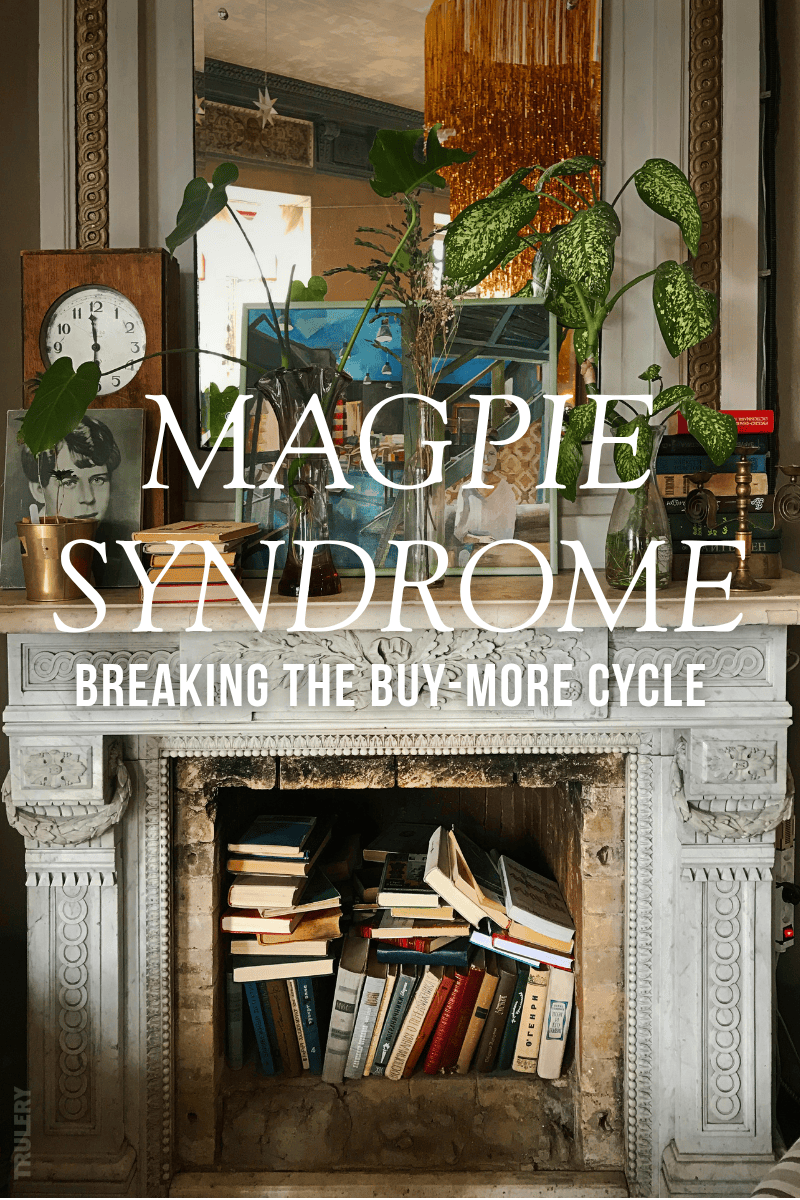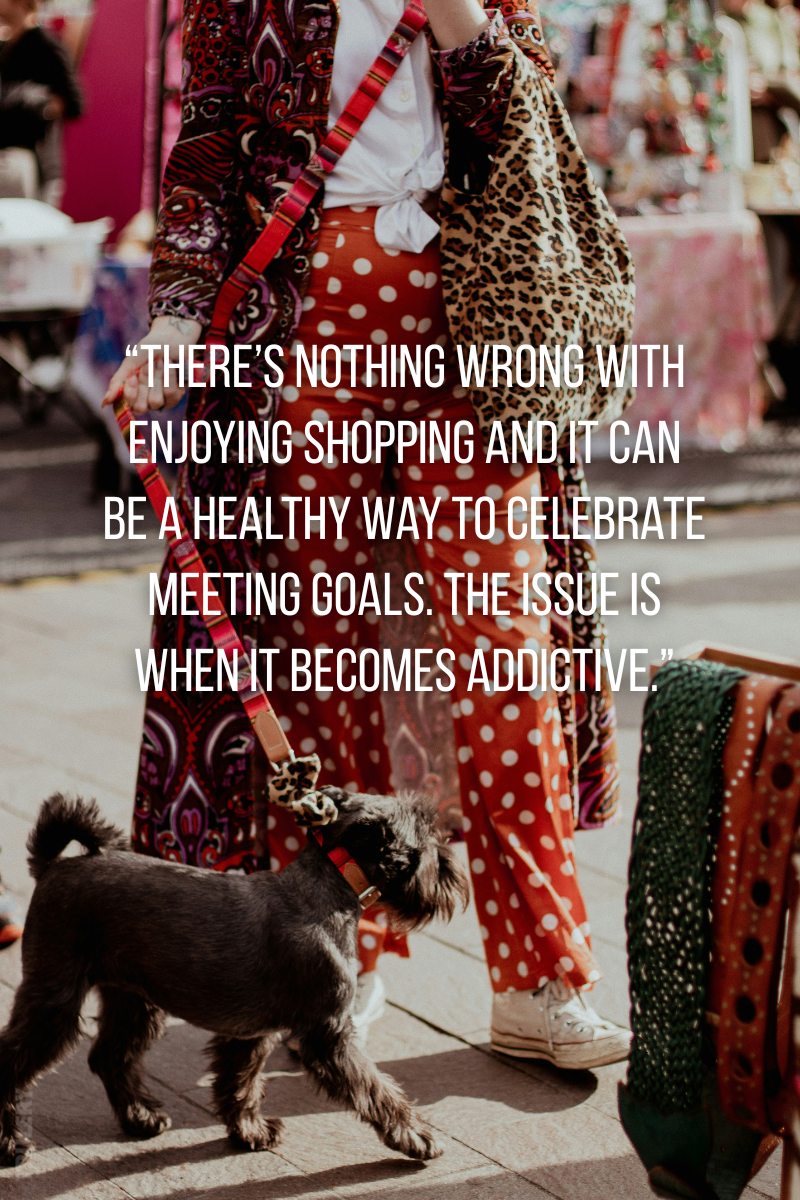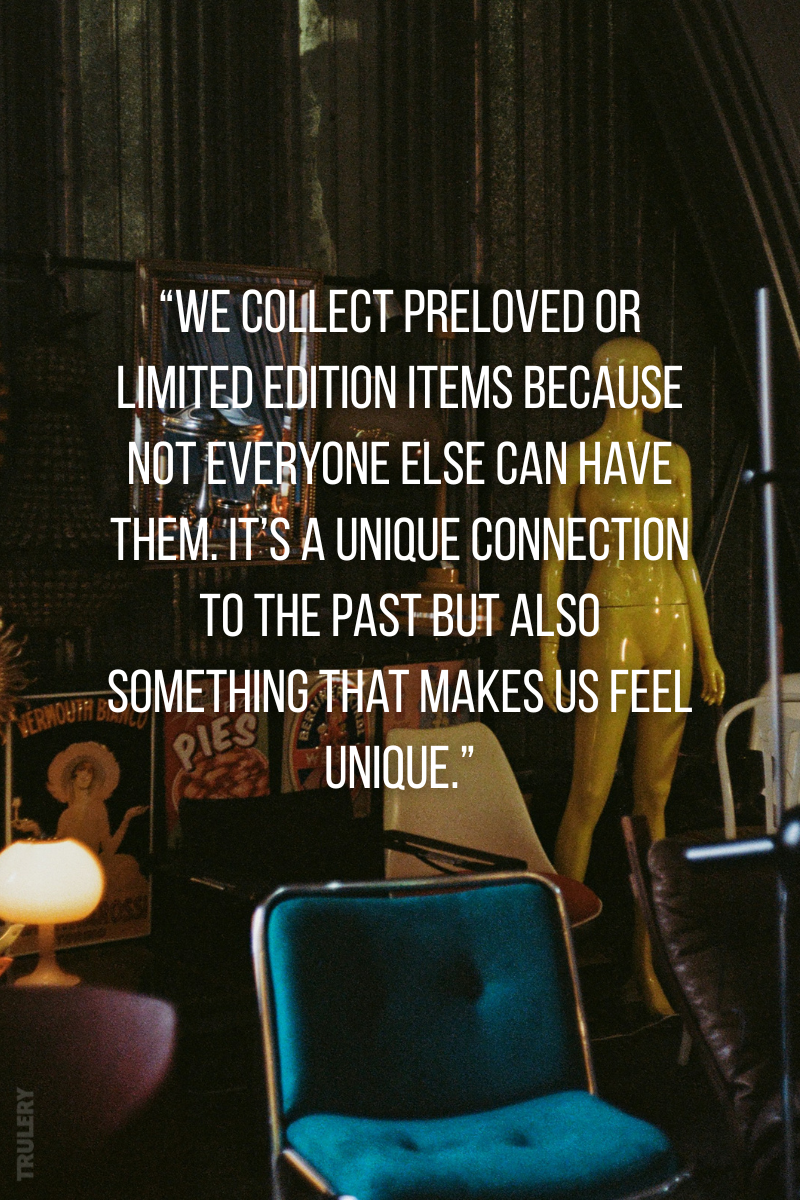Magpie Syndrome: Why We Keep Buying Things And How to Break the Cycle
Image via Svetlana Gumerova
One of the many joys of being alive at a time like this is rapid innovation. There’s always a new idea—a new way to optimize what we have. Everything is constantly getting bigger and better (or, in regards to tech, smaller and more sophisticated). But with this comes the pressure to keep up. On the other hand, there’s also a pressure to honour the past, holding onto centuries, if not millenia, of tradition.
Magpie Syndrome, Shiny Object Syndrome (SOS) to some, is being easily distracted by new things. This can be anything in relation to change, such as a new idea, job, creative pursuit, trend, or hobby. It often leads those affected by it to not complete or abandon their current pursuits and possessions, meaning much less can be achieved.
It can also look like impulsive spending behaviours and buying the newest gadget even when it doesn’t do much to improve your home’s aesthetic or your quality of life. In the home, this can look like hoarding—a never-ending collection of items to the point of the space feeling overcrowded.
Why Are We Like Magpies?
Image via Ellie Cooper
In an article for Psychology Today, Regan A. R. Gurung Ph.D. explained the human drive to impulsively buy gadgets and products and touched on the behaviours that underpin Magpie Syndrome.
When we buy things, it triggers the reward system in the brain, so pleasure chemicals like dopamine are released. There’s nothing wrong with enjoying shopping and it can be a healthy way to celebrate meeting goals like buying your first home. The issue is when it becomes addictive or a coping mechanism.
Shopping addiction isn’t new and we are certainly acquainted with it in our culture. We’ve all seen reality tv shows like My Shopping Addiction, and parrot the phrase “shop ‘til you drop”. However, with the post pandemic push to online shopping, parcels can be with you on the same day and there’s much more scope for mindless spending. With mindless spending can also come financial hardship and, in the worst case, debts.
Of course, nobody intentionally buys something they deem useless. Some of the gadgets we purchase make our lives easier by saving us time or money. However, Regan points out that advertisers unconsciously condition us to want their products more by making associations with reward. They also use mixed media to increase their perceived legitimacy—you’re more likely to trust a gadget seen on TV, billboards, magazines, local transport and social media as opposed to one seen only on a flyer.
Another thing that makes us order the latest products or limited-edition items is novelty. It’s not solely superficial—one study showed that novelty could potentially signal reward and promote memory. Novelty can also boost your own creativity and innovation, so it’s still worth having new things once in a while. However, a 2021 study by Qi et al. on teens found that novelty-seeking traits predicted an increased risk in addiction, depression and psychosis five years on.
In the context of collecting, the main drive is exclusivity—we collect preloved or limited edition items because not everyone else can have them. It’s a unique connection to the past but also something that makes us feel unique. Professor Andrew Dillon of the University of Texas wrote for Art Basel that collecting is a mechanism for investment, cultural preservation, and self-identity. Completing a collection can trigger our reward system but like those after the newest home tech, it can get out of hand.
How Can We Stop?
Image via Adolfo Felix
What’s clear from the research is that impulsive buying, a constant desire for novelty, and hoarding are all indicators of a buying addiction. It’s important to first note that addictive indicators don’t necessarily mean you have an addiction but that if unchecked you could develop one. Addiction is fuelled by excessive reward so the natural way to get around this is to find a healthier object of reward that you’re less likely to do excessively but releases the same chemicals like exercise or listening to music.
If you’re big on new gadgets, check that the gadget on your wishlist is unlike anything you own, would save you time (an hour plus) or money (costs less than paying for that service, has a low cost per use and is energy efficient).
Decluttering also helps if you worry that your collecting has gone too far. If the idea of clearing out a large collection of products overwhelms you, do a gentle process of elimination by setting aside just five to ten items. If you don’t use any of them or put them back up as decorations by the end of the month, donate them and start again next month. In a few months, your space will feel a lot less cramped.
Image via Tanya Prodaan
There’s a huge difference between having Magpie Syndrome and curating a home that meets your needs and feels good to live in. If you’re worried about towing the line, consider slowing down the pace of your buying to allow for mindful shopping and a more rewarding experience.
Written by Cheyenne
Cheyenne is a lifestyle writer with a particular interest in fashion, interiors and culture.





